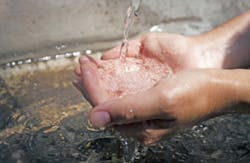Just in the New England area alone, according to the U.S. Environmental Protection Agency (EPA), an estimated 2.3 million people — about 20 percent of the total population — draw their water from a private well. Recently, since we are focusing on this part of the country, studies discovered that some private wells in New England were being contaminated with methyl tertiary butyl ether (MtBE), radon and arsenic, as well as several other contaminants.
As a result of the conditions of some private wells in the area, EPA New England started a “Protect Your Family, Test Your Well’s Water Quality” campaign. According to epa.gov, “EPA New England has a new campaign to get the word out to homeowners about the importance of taking precautions to protect, maintain and test their private wells.”
Unregulated wells that are not tested frequently can put homeowners at risk for the wide range of contaminants that are odorless, tasteless and colorless. It is important that dealers recommend a proactive approach to water quality testing to their private well customers.
Why to test
According to Mike McBride, marketing manager for Industrial Test Systems Inc. (ITS), due to the nature of how private wells obtain water, several common contaminants may be present in many wells across the country. “Many of the contaminants found in well water and groundwater come from humans and other animals as fecal matter,” notes McBride, regarding bacterial contamination. “Chemical contamination can also be an issue with groundwater.”
For example, nitrate has been a known popular well water contaminant. Nitrate is a naturally occurring chemical, which is made of nitrogen and oxygen. It is commonly found in air, soil, water and plants. Water wells are particularly susceptible because most nitrate contamination occurs in groundwater when plants and animal waste decompose. Fertilizer use near private wells is also a source of nitrate contamination in water.
McBride cites minerals, such as naturally occurring arsenic, fluoride, radon and uranium as other contaminants found in well water. “These contaminants are listed as carcinogens (cancer-causing) and should be monitored. Calcium and magnesium [are also common in wells and can] cause water to become hard, which can clog pipes or water heaters. [Additionally,] iron and manganese [are common and] can stain clothing and sink basins.”
How often to test
There are certain times of the year and after certain situations that experts and government agencies recommend testing private wells. EPA recommends testing private wells in such situations as:
- Heavily developed areas with land uses that handle hazardous chemicals
- Recent well construction activities or repairs
- Elevated contaminant concentrations found in earlier testing
- Noticeable variations in quality such as a change in taste, smell or appearance after a heavy rain or an unexplained change in a previously trouble-free well, such as a strange taste or cloudy appearance.
However, dealers and homeowners, as mentioned, should be proactive when testing wells as water quality as well as environmental and well conditions may change year-round. McBride notes, “Spring is the best time to test because wells are most vulnerable after the winter thaw. Percolating water picks up bacteria, nitrate and recently applied lawn chemicals. If the well’s upper part near the surface is leaky, contaminated water could enter, bringing contaminants with it.”
While laboratory testing is recommended for certain situations, such as a new well start-up or for a well that has been out of service for several years, today’s handheld field devices have improved analytical capabilities to provide an accurate description of water quality right in front of the customer.
“Handheld digital water testing is the wave of the future,” says McBride. “Advances in technology and chemistry have made previous complex methods easy to run accurate tests for contaminants in the field.”
Through knowledge and data, water treatment dealers are in a position to win new and repeat business with well water testing. It’s important to stay on top of customers’ planning strategies as they might not detect risk through visual inspection or taste.
